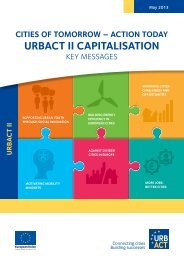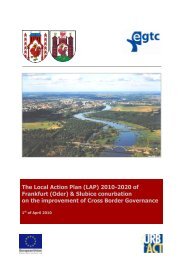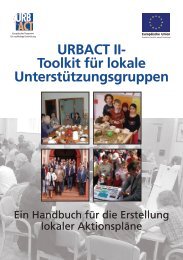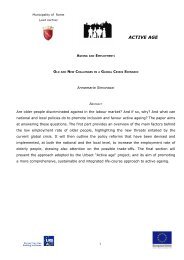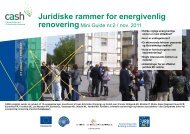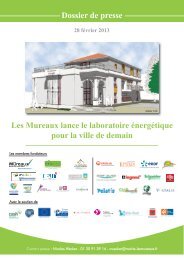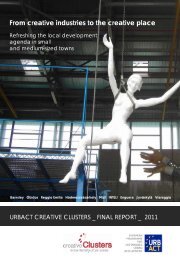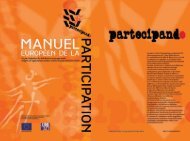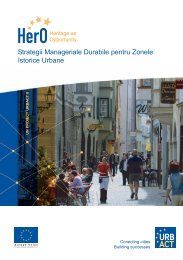ENTER.HUB_Baseline study PDF, 6 Mo - Urbact
ENTER.HUB_Baseline study PDF, 6 Mo - Urbact
ENTER.HUB_Baseline study PDF, 6 Mo - Urbact
Create successful ePaper yourself
Turn your PDF publications into a flip-book with our unique Google optimized e-Paper software.
EUROPEAN<br />
UNION<br />
European Regional<br />
Development Fund<br />
Partnership implementation phase<br />
During the development phase 8 cities were added to the Consortium, bringing it to 12<br />
Partners. To all but one (Gdynia-PL which joined the consortium in the beginning of<br />
October) we made a site visit (as we did for the development phase partners) in order to<br />
collect materials for the <strong>Baseline</strong> <strong>study</strong>, discuss the Partners expectations, define the<br />
roadmap for the implementation phase and to set up the ULSGs.<br />
Ten of the 12 partners are cities (though in the case of Ciudad Real represented by the<br />
Municipal Institute for Economic Promotion, Training and Work (IMPEFE) and 2 are regional<br />
entities (Creil Agglomeration – FR and the Örebro Regional Development Council – SE)<br />
In the following table and Figure represents the 12 partner consortium with the Matrix of<br />
partners/countries / status / population (city 10990/2010 and larger urbanized area 2010)<br />
The cities are all small/medium sized (50-250.000 inhabitants) but Lodz (725.000). <strong>Mo</strong>st<br />
cities increased modestly during the past 20 years, 3 even decreased in population.<br />
The regional population (continuous urban area – though the criteria about boundaries have<br />
not yet been refined) again is not very large (90 – 330.000 and one with 534.00 counting<br />
with the whole province) but in three cases where the population exceeds 1 million.<br />
There is a good geographical and cultural spread with 12 cities in 9 countries and nine<br />
languages present, 5 convergent, 6 competitive and one neutral.<br />
An important criteria of selection of partners has been the congruence with the project<br />
topic, different degrees of “state of the work” concerning and concerning the localization in<br />
the relevant territories and TEN-T rail corridors with High Speed lines or other main railway<br />
lines exiting or planned, implementation and development of the hub itself and, its insertion<br />
in the territory.<br />
In different partner - and accordingly to their specific interests – hav choosen the core<br />
project teams from different departments/ specialities as can been verified in Appendix 3E<br />
where the organizational charts are presented<br />
NOTE<br />
The Partners are presented - for the development and the implementation phase – in<br />
alphabetical order, being that Reggio Emilia as Lead Partner figures in the first place. From<br />
the beginning of the implementation phase all cities will be in alphabetical order, again but<br />
Reggio Emilia as Lead Partner)<br />
<strong>ENTER</strong>.<strong>HUB</strong> <strong>Baseline</strong> <strong>study</strong> 2012.10.31<br />
9



